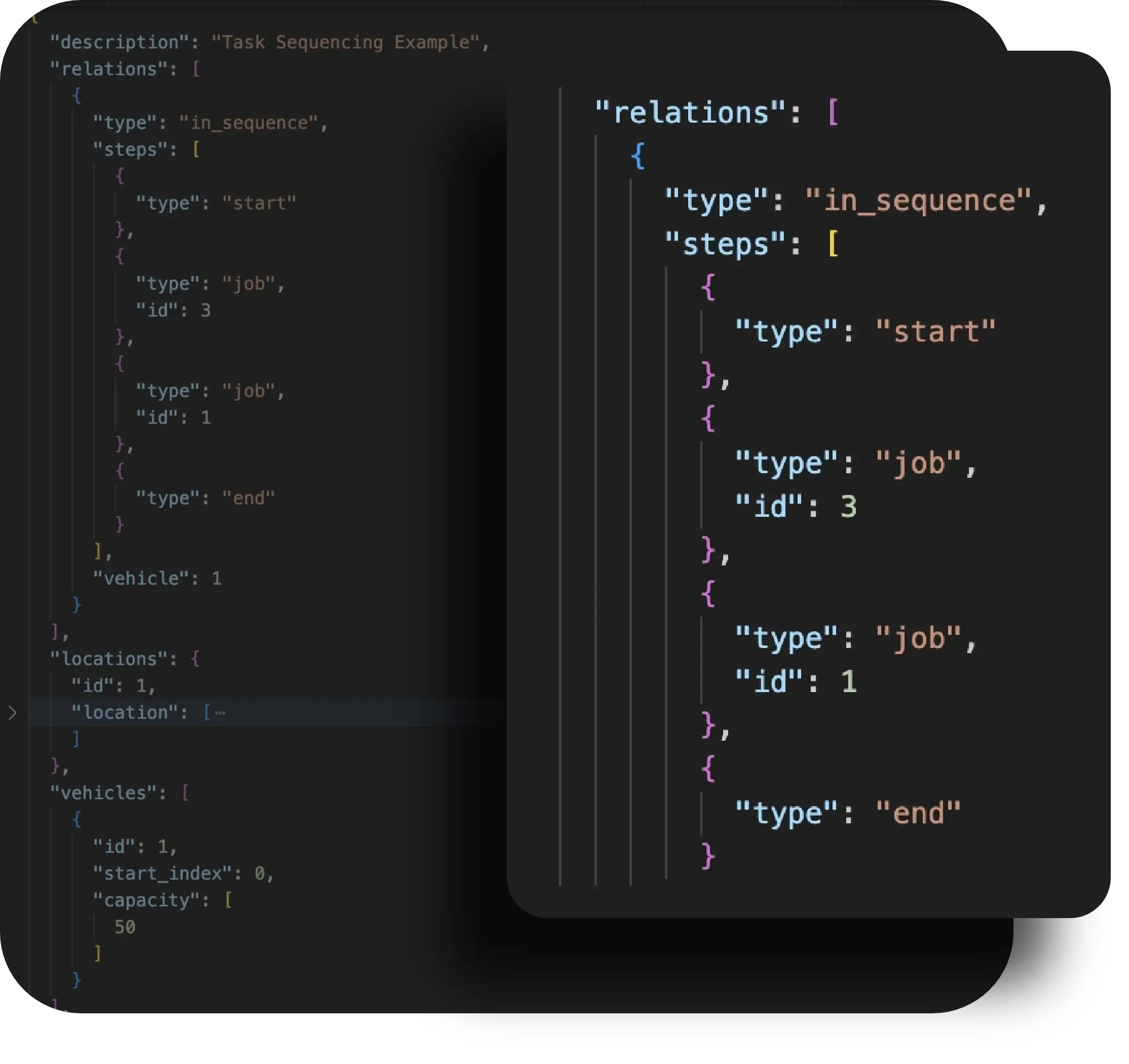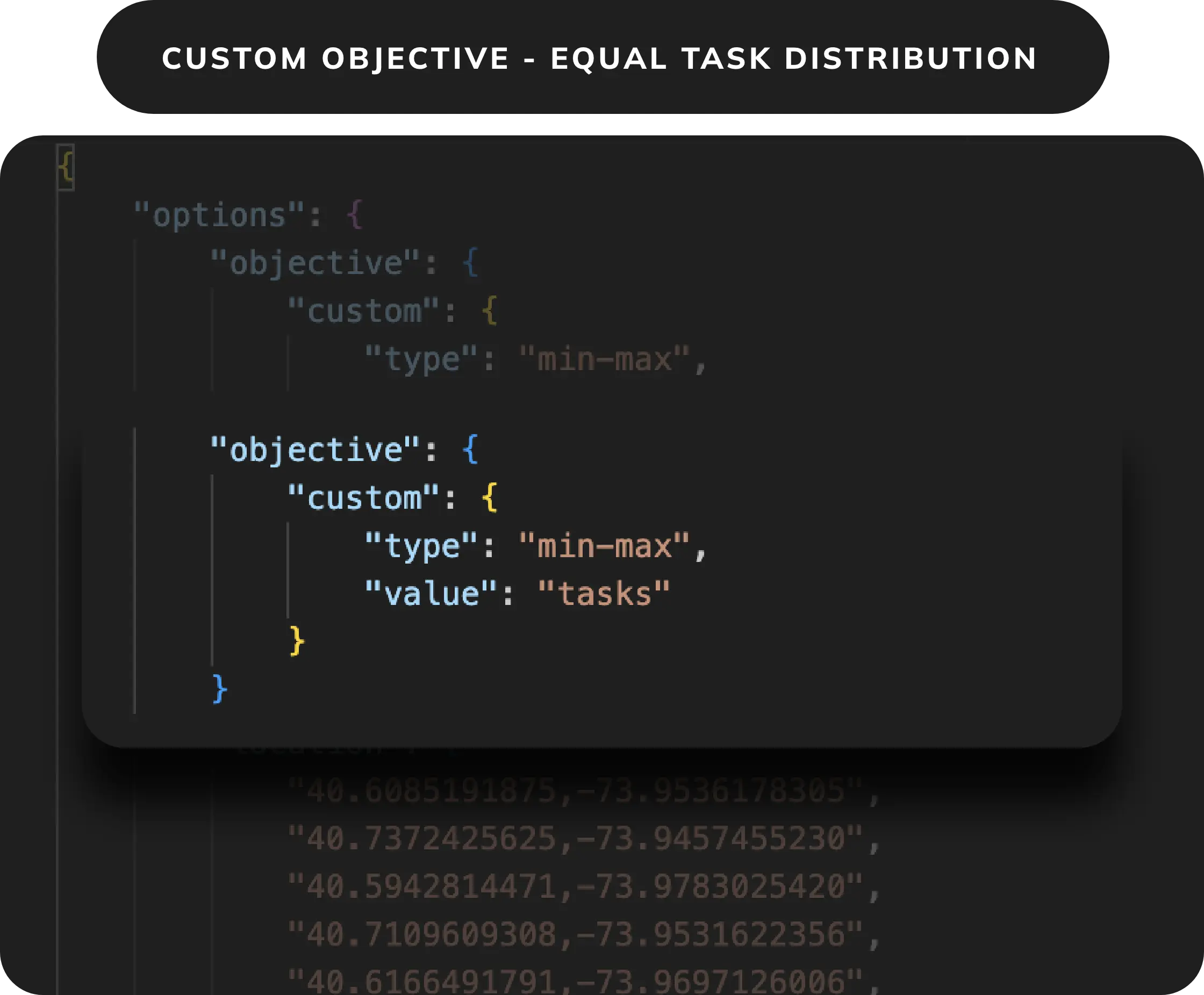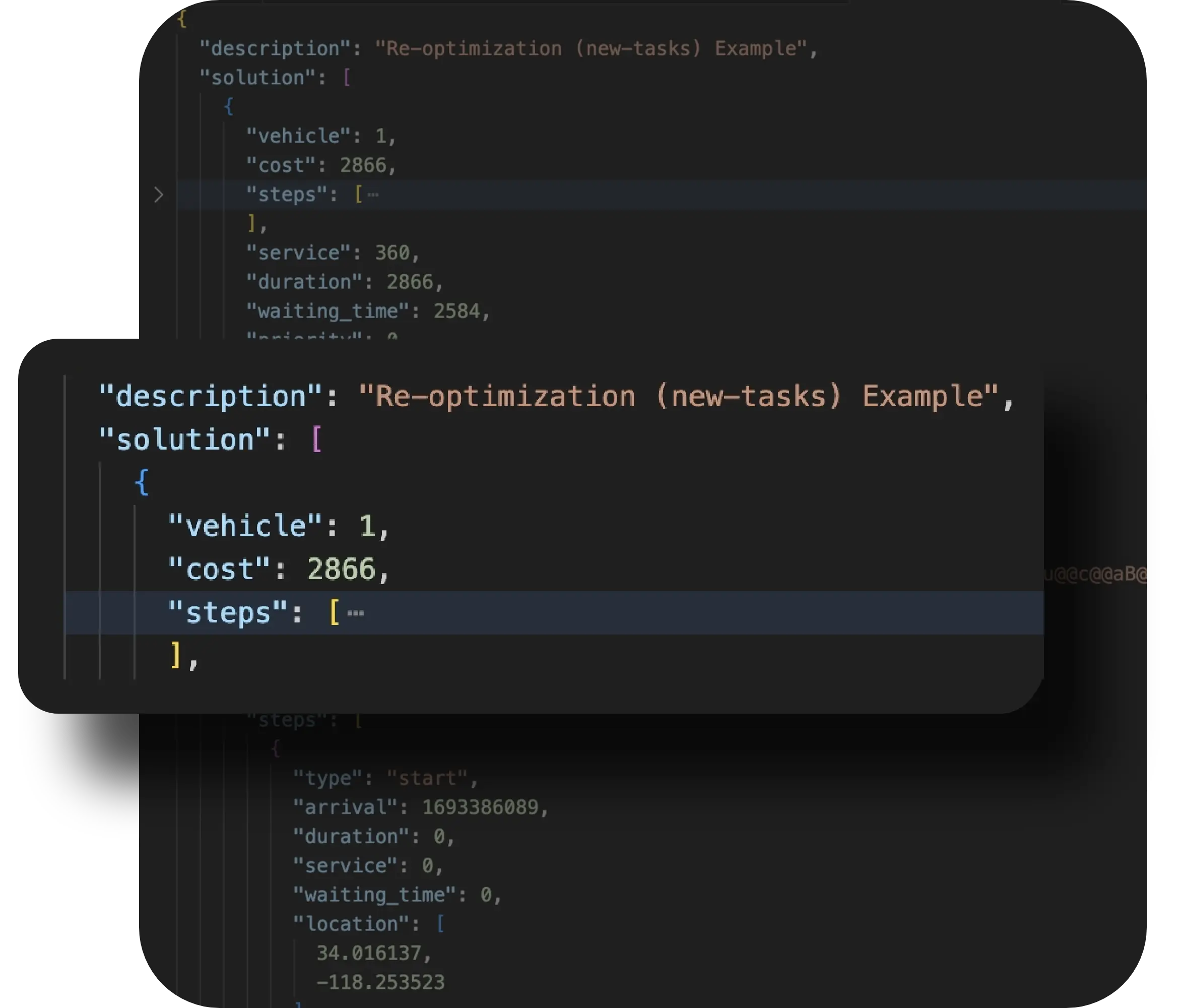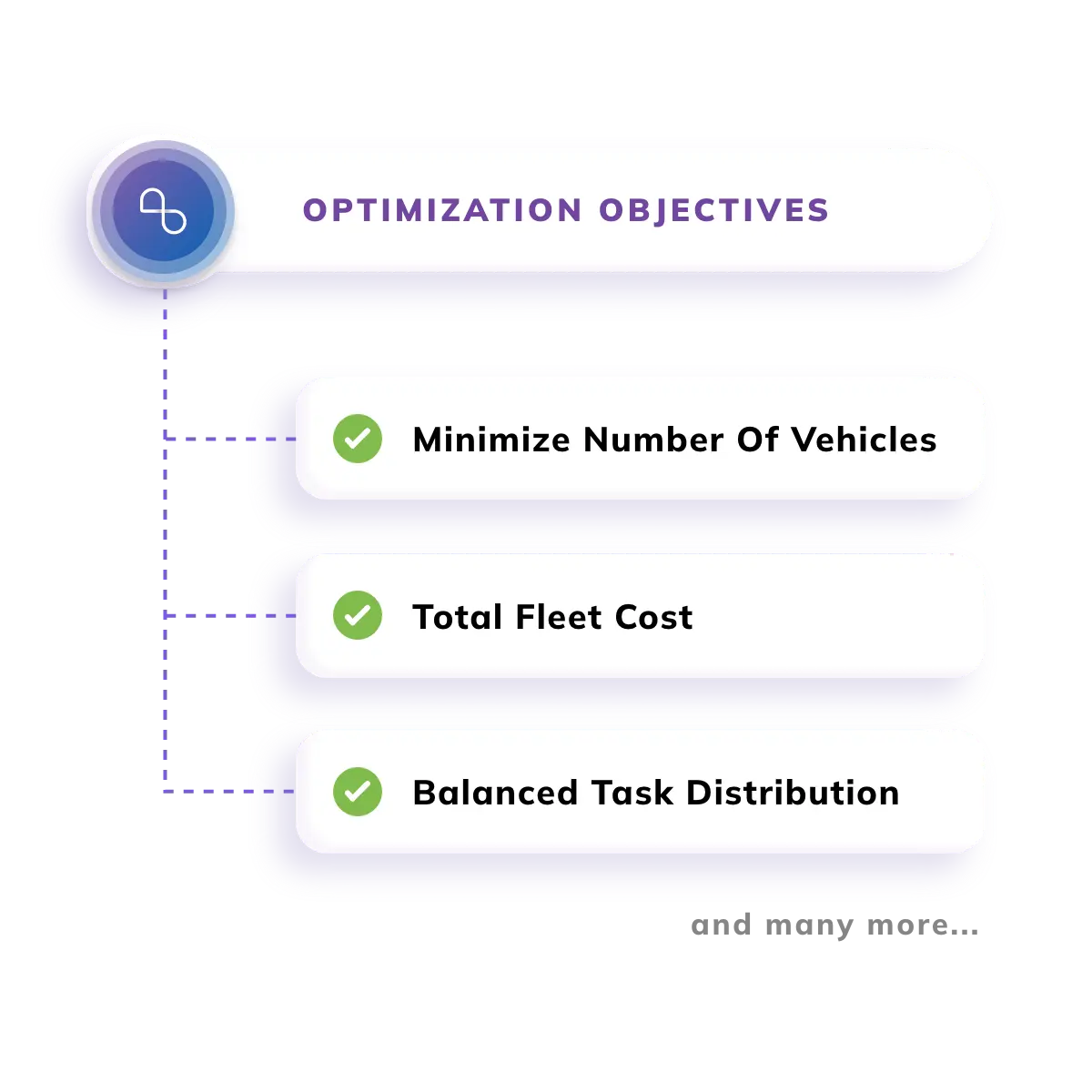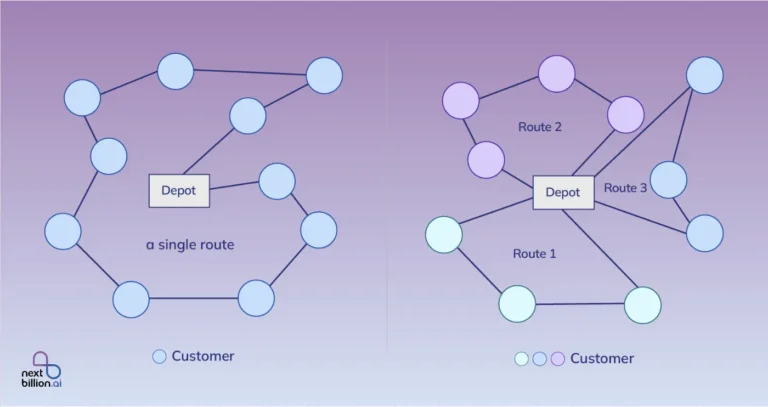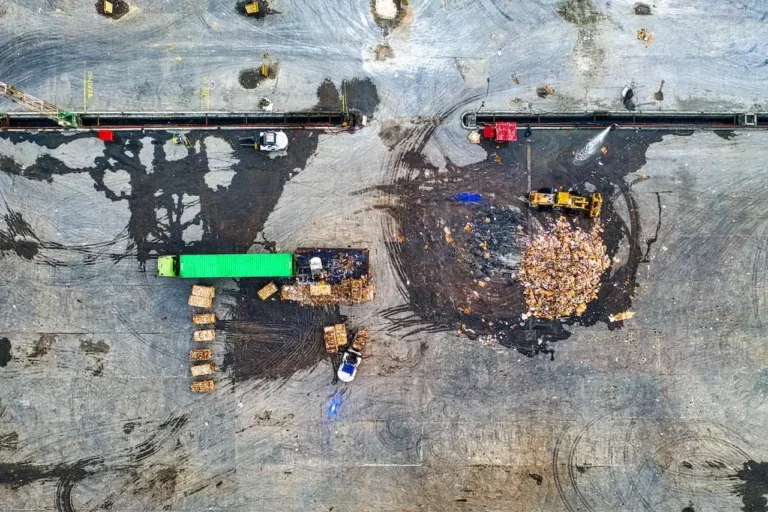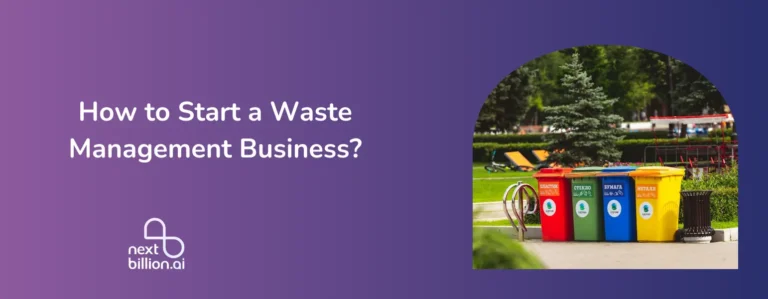
Table of Contents
Handling hazardous waste requires careful planning and strong safety protocols. Managing the collection routes for hazardous materials, which can include anything from toxic chemicals to radioactive substances, is a task that’s as challenging as it is essential. Optimizing routes for hazardous waste collection safeguards public health, protects the environment, minimizes the risk of accidental spills, and ensures regulatory compliance.
Route optimization for hazardous waste collection involves more than just finding the shortest path. It considers specific restrictions, regulatory guidelines, safety considerations, and dynamic factors like traffic and road conditions. Today, advancements in AI and machine learning have enabled specialized route optimization tools to help manage hazardous waste collection efficiently and safely.
In this blog, we’ll look at the importance of optimizing routes for the safe disposal of hazardous materials, how route optimization software aids this process, the parameters involved, and how you can implement a route optimization API to streamline operations.
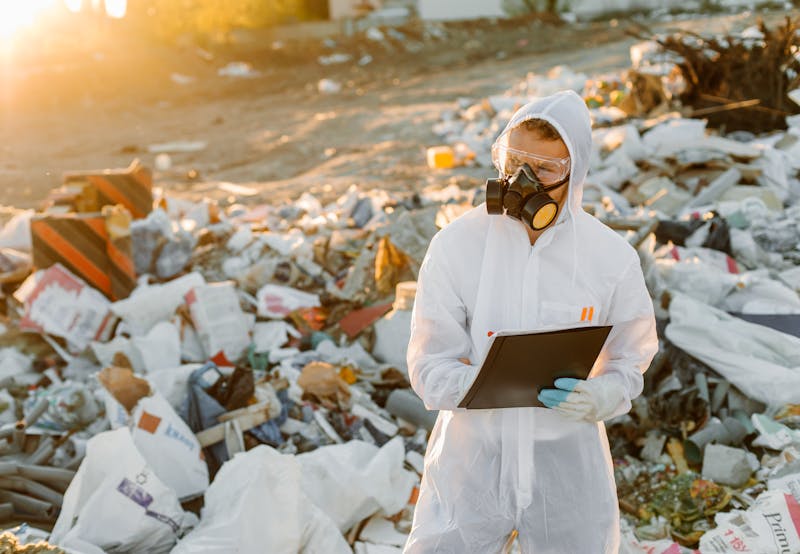
Why Optimized Routes are Essential for Safe Disposal of Hazardous Waste Collection?
Hazardous waste route collection requires careful planning to mitigate environmental and public health risks. Efficient route optimization means fewer vehicles on the road for shorter durations, reducing emissions and fuel consumption—crucial benefits when transporting dangerous materials.
In addition, optimized collection routes minimize human error. In manual route planning, every additional mile and every unnecessary stop increase the chances of an accident or hazardous spill. With optimized routes, vehicles travel through the safest possible paths, avoiding high-traffic or environmentally sensitive areas. This isn’t just a matter of convenience but a necessity, as mishandling hazardous materials can lead to serious consequences, including environmental contamination, health risks for nearby residents, and costly legal repercussions for waste management companies.
Therefore, optimizing routes for hazardous waste collection is crucial. This ensures that each journey is safe, cost-effective, and adheres to legal and environmental standards, whether it is delivery route optimization or field force management.
How Does Route Optimization Software Help?
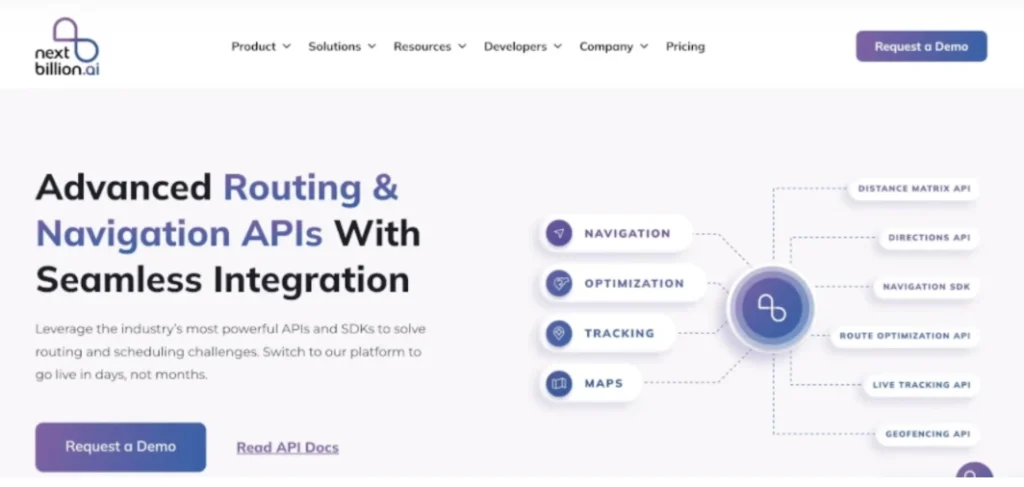
Route optimization software is pivotal in efficiently and safely disposing of hazardous waste. Through advanced algorithms and AI, software like NextBillion.ai analyzes various data points—traffic, weather conditions, road restrictions, and hazardous zones—to determine the most suitable routes. Here’s how it helps:
- Dynamic Route Planning: Traditional planning can’t match the real-time adjustments made possible by AI-powered route optimization. If a road suddenly becomes congested or a spill occurs, route optimization software reroutes the collection vehicle to avoid delays and potential hazards.
- Cost Reduction: With route optimization, companies can save on fuel, labor, and vehicle maintenance costs by using the most efficient routes. Fewer miles traveled mean less vehicle wear and tear, leading to lower maintenance costs and longer vehicle life.
- Enhanced Compliance: Hazardous waste transportation is heavily regulated. Route optimization software considers regulations, ensuring collection routes adhere to safety standards and avoid restricted zones. By integrating these compliance parameters, the software helps businesses avoid hefty fines.
- Real-Time Monitoring and Alerts: Using route optimization with AI, waste management companies can monitor routes in real-time and receive alerts about any deviation, delay, or issue. This increases oversight and allows quick interventions if anything goes wrong.
Standard route optimization software falls short in providing dispatch-ready routes because it gives optimal but impractical routes, like overlapping routes, which create inefficiencies. Route optimization using AI and machine learning transforms hazardous waste collection by enabling smarter, safer, and more cost-effective operations.
Parameters that Help Optimize the Routes
NextBillion.ai’s Route Optimization Flexible API offers various customizable parameters to ensure routes are efficient, effective, and tailored to unique operational needs. Here’s a look at some of the primary parameters that can be adjusted to enhance route optimization:
1. Maximum Waiting Time
Managing the waiting time is crucial to ensuring efficiency when optimizing routes for hazardous waste route collection. The Maximum Waiting Time parameter lets managers control the duration a driver waits upon arrival at a task location. This hard constraint applies to all tasks within the collection routes.
By using AI route optimization, businesses can set a maximum allowable wait time for each task, ensuring that the collection of hazardous waste proceeds smoothly without unnecessary delays. This feature is especially useful for consumer-facing services where reducing idle time is a primary concern. Achieving the benefits of route optimization is key to improving driver productivity and reducing downtime.
2. Task Sequencing
Completing tasks in a specific order is often necessary when optimizing routes for hazardous waste route collection. With route optimization using AI, users can define relationships between tasks to ensure they are completed in the required sequence. NextBillion.ai’s Route Optimization Flexible API offers three types of relations for collection routes:
- In Same Route: Ensures all related tasks are part of the same route.
- In Sequence: Specifies the order of tasks, but allows other tasks to be inserted if feasible.
- In Direct Sequence: Forces a strict sequence without inserting other tasks between them.
Businesses can use these features to address unique dependencies between hazardous waste route collection tasks. This flexibility allows route optimization using machine learning to improve task fulfillment and minimize inefficiencies across the entire collection process.
3. Custom Objective for Equal Task Distribution
For businesses focused on optimizing routes for hazardous waste collection, a Custom Objective can be set to achieve specific goals, such as ensuring an equal distribution of tasks across routes. Route optimization using AI allows users to set objectives like:
- Minimizing the number of vehicles used.
- Reducing the time taken to complete tasks.
- Ensuring an even workload across the collection routes.
These objectives can be tailored to address specific needs like balancing travel costs or maintaining a fair distribution of tasks among vehicles. AI route optimization helps improve resource utilization, enhances vehicle availability, and ensures that each hazardous waste route collection task is assigned to the most efficient route.
By using route optimization using machine learning, businesses can achieve optimal task allocation and improve operational efficiency.
4. Re-Optimization for Unassigned Tasks
In some cases, tasks in hazardous waste route collection may need to be assigned due to constraints such as vehicle capacities or shift timings. With route optimization using AI, businesses can use the Re-Optimization feature to adjust these variables and ensure that no task is left unassigned.
Modifying the number of vehicles, vehicle shift times, and task time windows allows users to re-optimize the collection routes and address previously unassigned tasks.
This process helps improve task fulfillment without drastically altering the original route plan, offering a flexible solution to last-minute changes. The benefits of route optimization are seen here, as the system adjusts quickly to real-time needs, ensuring that all hazardous waste route collection tasks are completed efficiently.
Understanding NextBillion.ai’s Waste Collection Solution

Efficient waste collection is vital for maintaining clean and sustainable environments. NextBillion.ai’s waste collection solution helps businesses streamline their operations by optimizing collection routes, reducing operational costs, and improving efficiency. The platform uses AI route optimization and advanced algorithms to provide a comprehensive solution for waste management.
1. Optimising Collection Routes with NextBillion.ai
NextBillion.ai’s platform leverages route optimization using machine learning to create optimized collection routes for waste pickup. This approach helps businesses plan routes that maximize the number of service stops while minimizing travel time and fuel consumption, resulting in significant cost savings. By considering operational constraints like vehicle capacity, traffic conditions, and waste type, route optimization using AI ensures that each vehicle is used to its full potential.
2. Streamlined Waste Collection Operations
Here’s how NextBillion.ai streamlines waste collection operations:
Optimized Routes for Capacity Efficiency
The platform optimizes fleet utilization by ensuring that no trucks are underutilized. Each vehicle is assigned tasks based on truck capacity and waste type, ensuring that waste collection is efficient and cost-effective. This optimizing routes approach minimizes idle time and increases overall productivity.
Balanced Workload Distribution
NextBillion.ai’s AI route optimization also distributes workloads evenly across drivers. The system considers working hours, breaks, and shift schedules to avoid fatigue and ensure smooth operation. The result is a balanced workload that optimizes driver performance while reducing the risk of accidents.
Advanced Planning and Real-Time Monitoring
The platform enables businesses to pre-plan collection routes in advance, creating multi-day schedules to meet customer demands. By planning fleet deployments over several days, companies can optimally utilize resources. Additionally, real-time tracking helps monitor vehicle locations, deviations, and speed, ensuring that operations stay on course and compliant with regulations.
3. Route Optimization for Specialized Waste Collection
NextBillion.ai’s route optimization using AI is adaptable to various waste collection needs, from household waste to hazardous waste. Here’s how it applies to different use cases:
- Hazardous Waste Route Collection: For hazardous waste collection, NextBillion.ai ensures that the routes are optimized not only for efficiency but also for safety. Special considerations, such as the handling and transportation of hazardous waste, are incorporated into the route optimization process to avoid risks while maintaining efficiency.
- Household and Industrial Waste Collection: The system generates collection routes considering the size and frequency of waste pickups, optimizing routes for residential and industrial areas. This results in faster, more efficient operations with fewer delays.
- Scrap Collection and Biomedical Waste: For scrap and biomedical waste collection, NextBillion.ai tailors routes to prioritize specific needs, such as waste handling protocols and time-sensitive pickups. The platform uses AI route optimization to balance these factors and ensure timely service.
How to Implement Route Optimization API in Your Operations?
Implementing route optimization using AI can significantly enhance the efficiency and cost-effectiveness of operations across industries. One key area where this technology is transforming logistics is waste collection. Hazardous waste route collection requires careful planning and optimization to ensure safety and compliance while minimizing operational costs. NextBillion.ai’s Route Optimization API provides:
- A comprehensive solution for optimizing routes.
- Enhancing waste collection operations.
- Ensuring that routes are efficient, timely, and safe.
With that in mind, here’s how to implement route optimization API in your operations:
1. Understanding the Waste Collection Challenge
Waste collection operations are complex, involving the management of fleets, multiple waste types, and different regions. For example, a city’s waste collection agency may need to collect waste from 200 bins across eight regions. The waste types include solid, organic, and medical waste, with hazardous waste requiring specific handling and designated trucks. Additionally, the waste bins vary in size, and different collection priorities must be followed depending on the type of location (residential, commercial, or hospital).
Optimizing routes is crucial to minimizing travel time, reducing fuel consumption, and ensuring trucks complete their routes efficiently within the allocated time. This is especially important in hazardous waste route collection, where safe handling and timely disposal are critical.
2. Optimizing Routes with AI
NextBillion.ai’s Route Optimization API uses AI route optimization to solve the problem of inefficient collection routes. The API calculates the best possible truck routes, ensuring that each truck operates within its capacity limits and considering the various waste types and locations. The route optimization using machine learning allows the system to continuously learn from past data, adjusting the optimization based on changing variables like traffic, weather conditions, or last-minute changes in collection requests.
Here’s how the system works:
- Region Division: The city is divided into non-overlapping regions using Voronoi tessellation. This helps break the collection area into manageable sections, improving route planning.
- Truck Allocation: Trucks are assigned based on the type of waste and region, with specialized trucks handling hazardous waste route collection.
- Route Calculation: The API calculates optimized collection routes, ensuring that each truck covers its designated areas in the shortest time possible while respecting the truck’s capacity.
3. Benefits of Route Optimization
There are several benefits of route optimization, particularly when leveraging route optimization using AI:
- Efficiency: By reducing travel distances and optimizing collection routes, fuel consumption and operational costs are minimized.
- Timely Collection: Optimizing routes ensures that all waste bins, including those at high-priority sites like hospitals, are collected on time.
- Environmental Impact: Shorter routes lead to lower emissions, contributing to greener waste management practices.
- Safety: In hazardous waste route collection, optimized routes ensure that trucks handling sensitive materials follow safe, compliant paths, reducing risks associated with transporting hazardous materials.
4. Real-Time Adjustments and Dynamic Re-Optimization
One key advantage of using AI route optimization is the ability to adjust collection routes dynamically. If unexpected changes occur (e.g., new hazardous waste bins, blocked roads, or truck breakdowns), the Route Optimization API can be rerun to optimize routes in real time. This ensures that waste collection operations remain efficient, even in unforeseen circumstances. With route optimization using machine learning, the system learns from these changes, improving future route planning and enhancing efficiency.
5. Visualization with Web Maps SDK
NextBillion.ai provides the Web Maps SDK to visualize optimized collection routes on interactive maps to make route optimization more actionable. This real-time visualization helps managers track waste collection progress, monitor performance, and adjust routes on the fly. It also enhances coordination across different regions, allowing operators to see if any adjustments need to be made to the plan.
The Bottom Line
Route optimization is a game-changer for hazardous waste collection. Companies can use AI route optimization to create safer, more efficient, and cost-effective collection routes that prioritize environmental and public safety. Route optimization using machine learning and AI enhances compliance, reduces costs, and minimizes the risk of accidents and spills, offering a powerful advantage in the waste management industry.
Incorporating route optimization using AI is not just beneficial—it’s essential for the future of safe, sustainable, and compliant hazardous waste management.
NextBillion.ai’s customizable, AI-driven route optimization API provides a reliable, scalable, and effective solution for optimizing hazardous waste route collection. Whether you’re managing hazardous waste collection for a small municipality or a large corporation, NextBillion.ai offers the flexibility and precision needed to optimize collection routes, enhance safety, and improve overall efficiency.
About Author
Bhavisha Bhatia
Bhavisha Bhatia is a Computer Science graduate with a passion for writing technical blogs that make complex technical concepts engaging and easy to understand. She is intrigued by the technological developments shaping the course of the world and the beautiful nature around us.







